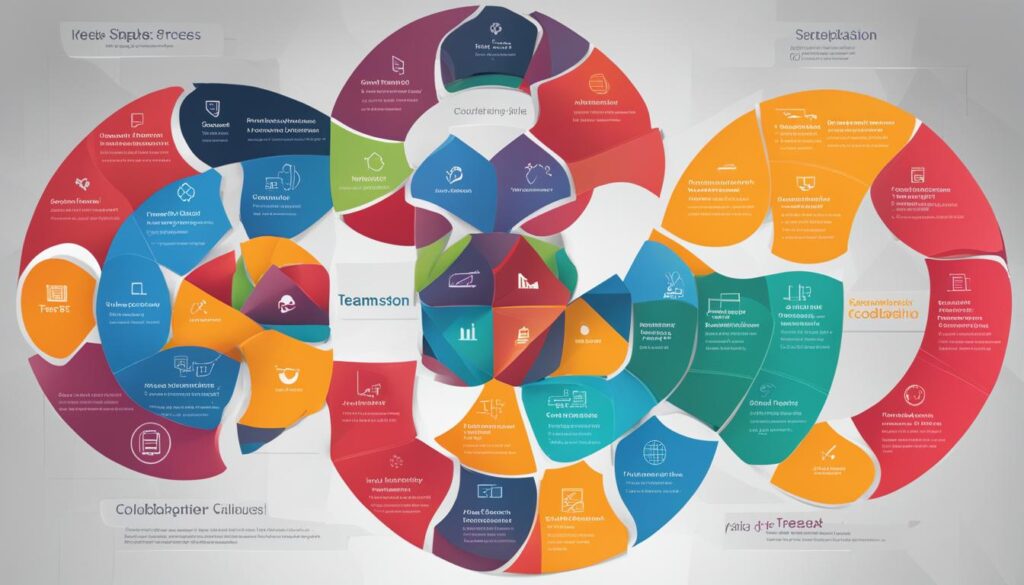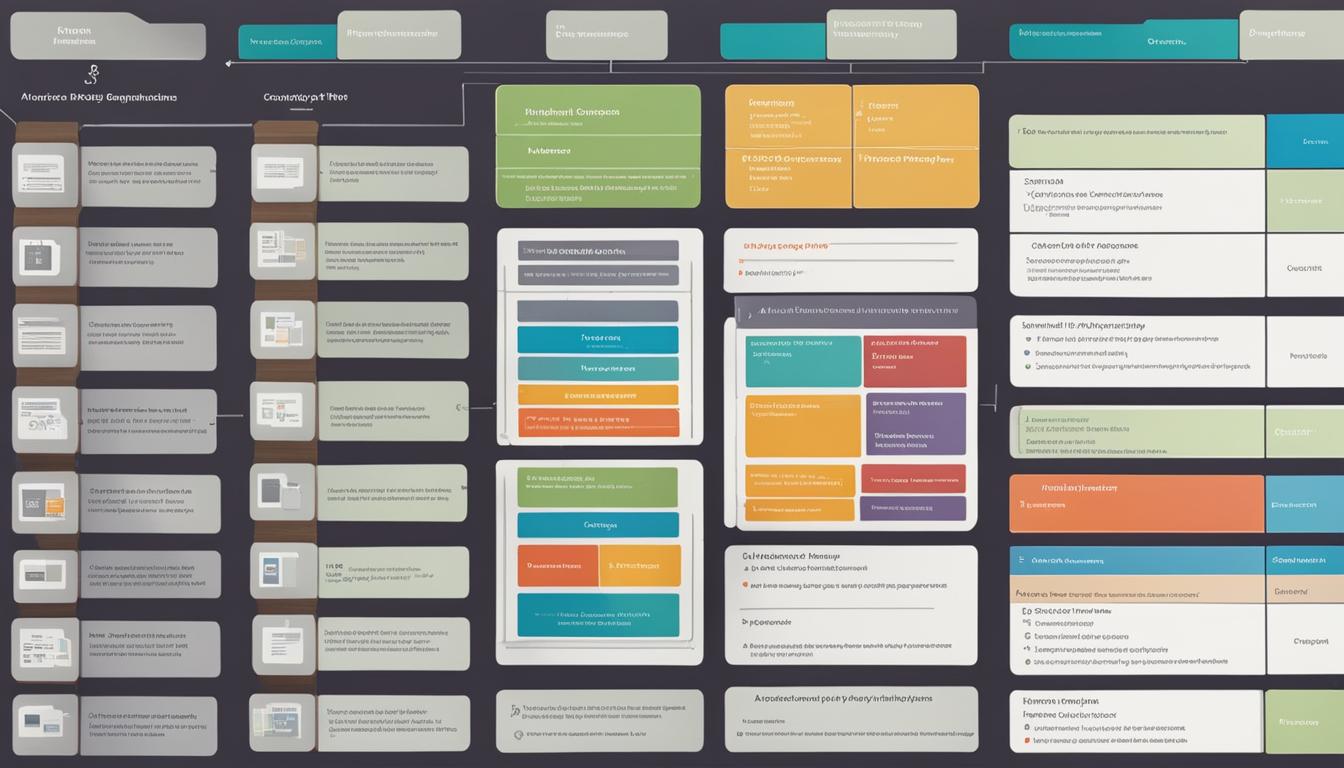Welcome to our comprehensive guide on IT playbooks and how they can help streamline your information technology operations. In this article, we will explore what exactly a playbook is in the context of IT, its benefits, and provide tips on how to create an effective IT playbook for your organization.
So, what is a playbook in information technology? Simply put, an IT playbook is a series of pre-defined instructions or actions created to be executed for a specific desired result. It serves as a guide for your teams, providing them with strategies and best practices that can be repeated and optimized over time.
Playbooks play a crucial role in customer success within the IT field. They can be used to engage and adopt customers to a product at different stages of their lifecycle. Additionally, playbooks help improve accountability and scalability within customer success teams by providing structure and metrics for tracking effectiveness.
Creating playbooks tailored to your company’s objectives and needs can be immensely valuable. They can be used for various purposes, such as reducing churn, onboarding new customers, and enhancing customer communication. Regardless of the size or industry of your company, implementing IT playbooks can significantly improve efficiency and customer satisfaction.
Contents
Key Takeaways:
- An IT playbook is a series of instructions or actions for desired results in information technology.
- Playbooks in IT can be used to engage and adopt customers, improve accountability, and scale customer success teams.
- Creating tailored playbooks can help reduce churn, onboard new customers, and enhance communication.
- IT playbooks are essential for companies of all sizes and industries to improve efficiency and customer satisfaction.
Benefits of Using an IT Playbook
Using an IT playbook can bring numerous benefits to your company. Let’s explore some of the key advantages:
- Improved Accountability: Playbooks establish metrics for tracking and measuring success, ensuring that your customer success goals align with your business objectives. They hold teams accountable for achieving desired outcomes, leading to greater accountability and results.
- Enhanced Scaling and Structuring: Playbooks provide guidance and direction for complex tasks, facilitating the scaling and structuring of your customer success teams. By aligning teams at significant intersections in the customer journey, such as handoffs and implementation, playbooks reduce errors and enhance the overall customer experience.
- Efficient Task Tracking: With playbooks, you can easily track tasks and measure the effectiveness of your customer success managers. This allows you to gain valuable insights into their performance and identify areas for improvement.
Best Practices for Implementing IT Playbooks
To ensure maximum effectiveness when implementing IT playbooks, consider the following best practices:
- Segment Customers: Segment your customers based on their specific needs and preferences. This enables you to create targeted playbooks that cater to their unique requirements.
- Establish Clear Goals: Clearly define the objectives of your playbook. Whether it’s reducing churn, improving onboarding, or enhancing communication, having clear goals will help guide your playbook development.
- Regular Evaluation and Updates: Continuously evaluate and update your playbooks based on feedback and experience. This ensures they remain relevant and effective in achieving your desired outcomes.
By leveraging the benefits of IT playbooks and following best practices for implementation, you can streamline processes, improve customer success, and drive overall business success.
Examples of IT Playbooks
IT playbooks are versatile tools that can be tailored to meet the specific needs and objectives of a company. They come in varying degrees of complexity and content, equipping organizations with a solid foundation for success. Here are a few examples of IT playbooks that can drive efficiency and foster positive outcomes:
- Onboarding Playbooks: Designed to guide the seamless onboarding of new customers, these playbooks provide step-by-step instructions to ensure a smooth transition into using the company’s products or services. They outline the necessary actions and milestones to successfully introduce new customers to the organization, minimizing any potential hurdles or confusion. By following an onboarding playbook, companies can enhance customer satisfaction and accelerate time-to-value.
- Reducing Churn Playbooks: Churn, or customer attrition, is a common challenge for companies. These playbooks are created to address the factors that contribute to customer churn and outline effective strategies to mitigate them. They focus on identifying pain points, improving customer retention, and implementing preventive measures to reduce churn rate. By implementing a reducing churn playbook, businesses can strengthen customer relationships, increase loyalty, and ultimately improve their bottom line.
- Communication Playbooks: Effective communication is essential for fostering strong customer relationships. Communication playbooks provide guidelines and best practices for engaging with customers through various channels, such as emails, calls, and meetings. These playbooks ensure consistent and clear communication, helping to build trust, address concerns, and provide exceptional customer service. By following a communication playbook, companies can enhance customer satisfaction and maintain positive interactions throughout the customer journey.
The aforementioned examples represent just a fraction of the possibilities when it comes to IT playbooks. The essential elements that make a playbook successful include:
- Understanding the Pain Points and Goals of the Customer: A thorough understanding of customer pain points and goals is crucial for creating a playbook that addresses their specific needs and drives meaningful outcomes.
- Setting Clear Objectives: Clearly defined objectives help to align the playbook with the desired outcomes and provide a roadmap for success.
- Identifying the Appropriate Milestones and Touchpoints: Identifying key milestones and touchpoints in the customer journey allows for the creation of a playbook that effectively guides customers through each stage.
- Segmenting Customers Based on Needs and Preferences: Segmenting customers based on their unique needs and preferences enables the tailoring of playbook instructions and actions to suit their individual requirements.
- Providing Detailed Instructions and Actions: Playbooks should provide comprehensive and detailed instructions and actions for each stage, ensuring that clear guidance is available to facilitate successful implementation.
Regular evaluation and improvement of playbooks based on feedback and results are essential to ensure their ongoing effectiveness and alignment with business objectives.

How to Create an IT Playbook
Creating an IT playbook involves several essential steps to ensure its effectiveness and alignment with your company’s objectives. By following these implementation tips, you can develop a playbook that addresses your customer’s pain points and helps achieve your desired outcomes.
- Understand Customer Pain Points: To create a playbook that resonates with your customers, it’s crucial to gain a deep understanding of their pain points and goals. By doing so, you can identify the specific areas that need to be addressed in your playbook.
- Set Clear Goals: Clearly define your goals for the playbook, such as reducing churn or improving product adoption. These goals will serve as a guiding force throughout the playbook creation process.
- Align Playbook with Customer Journey: Map out the milestones and touchpoints in your customer’s journey and ensure that your playbook is aligned with them. By doing so, you can trigger the playbook at the right time and provide the necessary instructions and actions for each stage.
- Segment Customers: Segment your customers based on their unique needs, preferences, and characteristics. This segmentation will enable you to tailor the playbook to their specific requirements, increasing its effectiveness.
- Evaluate and Update: Regularly evaluate and update your playbook based on feedback and results. This iterative process will help improve the playbook’s effectiveness over time and ensure its relevance in an ever-changing IT landscape.
By following these steps, you can create an IT playbook that addresses your customer’s pain points, achieves your goals, and improves overall efficiency in your IT operations.

Key Steps in Creating an IT Playbook
| Steps | Description |
|---|---|
| 1 | Understand Customer Pain Points |
| 2 | Set Clear Goals |
| 3 | Align Playbook with Customer Journey |
| 4 | Segment Customers |
| 5 | Evaluate and Update |
Continuously refining your IT playbook based on feedback and results will ensure its effectiveness and enable your company to meet its IT goals.
Playbook in Business vs IT
While there are similarities between playbooks in business and IT, there are also some key differences. In business, a playbook typically refers to a comprehensive guide that outlines the processes, policies, and standard operating procedures of a company. It includes information on the company’s profile, people, policies, and processes and acts as a reference guide for employees to understand how the business operates and how to perform their roles.
An IT playbook, on the other hand, specifically focuses on the use of technology to streamline processes and improve efficiency. It provides instructions and best practices for IT teams to follow in order to achieve desired outcomes in areas such as customer success, application development, and database management.
“In business, a playbook is like a roadmap that guides employees through the various aspects of their roles and helps ensure consistency and adherence to company policies. It serves as a central source of information, providing employees with the necessary guidance to perform their tasks effectively.”
While both types of playbooks serve a similar purpose of providing structure and guidance, the content and focus may differ based on the specific needs of the company and the industry it operates in.
Comparing Business Playbooks and IT Playbooks
| Aspect | Business Playbooks | IT Playbooks |
|---|---|---|
| Focus | Processes, policies, and standard operating procedures | Technology and IT-related tasks |
| Purpose | Provide guidance and instruction for employees | Streamline processes and improve efficiency in IT operations |
| Content | Company profile, people, policies, and processes | Best practices, instructions for IT tasks |
| Scope | Company-wide | IT-specific tasks and operations |

Note: The table above provides a comparison between business playbooks and IT playbooks, highlighting their differences in terms of focus, purpose, content, and scope.
Conclusion
In conclusion, implementing an IT playbook can bring numerous benefits and significantly improve the efficiency and effectiveness of various areas within your company, such as customer success and IT operations. By utilizing an IT playbook, you can enhance accountability, scalability, and customer satisfaction.
One of the key advantages of creating a tailored IT playbook is the improved accountability it provides. By establishing metrics and clear goals, you can track and measure the success of your customer success teams, ensuring that they are aligned with your business objectives and held responsible for achieving desired outcomes.
Moreover, an IT playbook facilitates scalability and streamlines processes. It offers guidance and direction for complex tasks, ensuring that your teams are properly aligned at critical points in the customer journey, such as handoffs and implementation. This reduces the likelihood of errors and enhances the overall customer experience.
To maximize the effectiveness of your IT playbook, it is essential to continuously evaluate and update it based on feedback and results. This allows you to fine-tune the playbook, address any issues or areas for improvement, and optimize its impact over time.
In summary, creating and implementing an IT playbook is a recommended practice for any company, regardless of its size or industry. By leveraging the benefits of an IT playbook, you can enhance operational efficiency, achieve desired outcomes, and deliver an exceptional customer experience.
FAQ
What is an IT playbook?
An IT playbook is a series of instructions or actions created beforehand to be executed for a specific desired outcome in information technology.
How can an IT playbook benefit a company?
An IT playbook can improve accountability, scalability, and customer satisfaction by establishing metrics, providing guidance for complex tasks, and facilitating effective customer communication.
Can you provide examples of IT playbooks?
Examples of IT playbooks include onboarding playbooks, reducing churn playbooks, and communication playbooks.
What are the essential elements of an IT playbook?
The essential elements of an IT playbook include understanding customer pain points and goals, setting clear objectives, segmenting customers, and providing detailed instructions for each stage.
How do you create an IT playbook?
To create an IT playbook, you need to understand customer pain points and goals, set clear objectives, align with the customer journey, segment customers, and regularly evaluate and update the playbook.
What is the difference between a playbook in business and IT?
While both types of playbooks provide structure and guidance, a business playbook outlines the processes and policies of a company, while an IT playbook focuses on using technology to improve efficiency.




